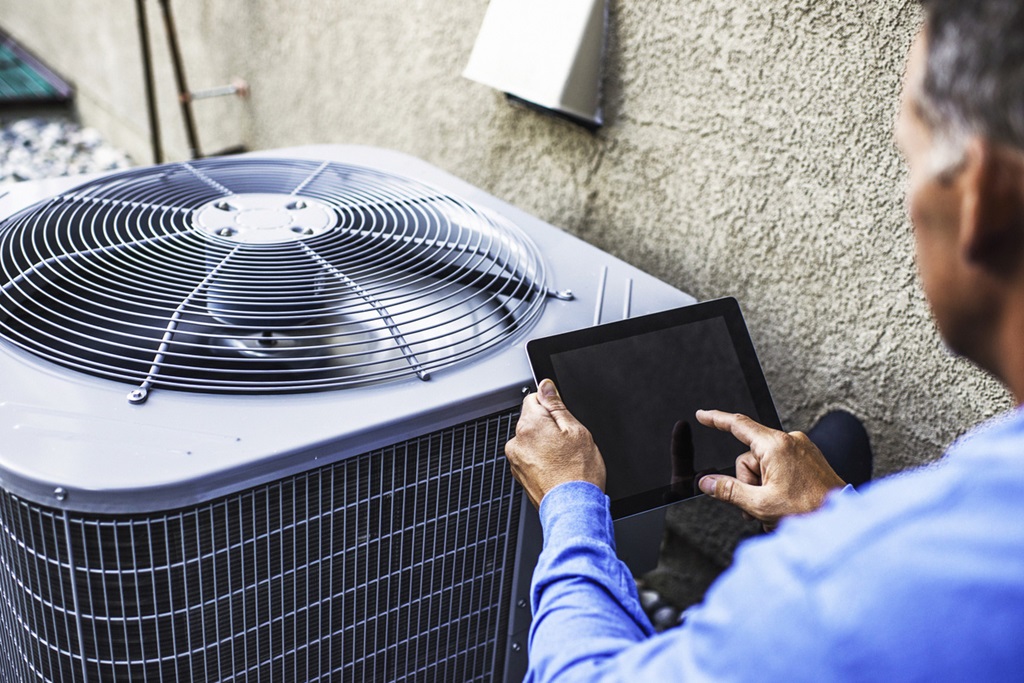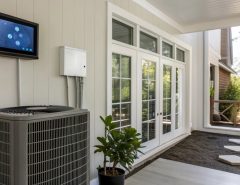Having an HVAC system that’s always blowing at full speed can be annoying and costly. The constant roar of the fan is disruptive and the system will be working harder than necessary, using more electricity. Fortunately, there are several potential causes of an overly fast HVAC fan that you can troubleshoot yourself. With some simple checks and adjustments for HVAC fan speed too high, you can get your fan back to running at the proper speed.
Why Does HVAC Fan Speed Too High Matter?
Your HVAC system’s fan is responsible for circulating heated or cooled air through your home’s ductwork. The fan speed needs to be carefully controlled to maintain comfort and efficiency. Having the fan blow too fast can cause the following problems:
- Noise – Higher fan speeds generate more noise from airflow and vibration. This can make it difficult to hear conversations or sleep.
- Draftiness – Fast airflow coming out of vents can create uncomfortable drafts, no matter what the thermostat setting.
- Electricity waste – The HVAC system uses more energy with the fan on high. This leads to higher utility bills.
- Equipment strain – Components like the fan motor have to work extra hard when running fast constantly. This shortens their lifespan.
- Temperature imbalance – Some rooms get too much airflow and others not enough, making it hard to control hot and cold spots.
To maximize comfort and efficiency, the fan needs to run at slower speeds most of the time. It should only temporarily increase speed to meet heating or cooling demands.
Checking Fan Speed Settings

The first thing to check is whether your HVAC system’s fan speed settings are actually configured correctly. There are typically at least 3-speed options:
- Low – For continuous, gentle circulation when no cooling or heating is needed.
- Medium – The default speed for most day-to-day operations.
- High – For quickly heating up or cooling down the home when temperatures change drastically.
Ideally, the fan should run on low or medium most of the time. Here are some things to look at to make sure this is happening:
Thermostat Fan Mode
All programmable thermostats have a setting to control the fan. This is separate from adjusting the heating/cooling temperature. Typical modes options are:
- Auto – Fan only runs as needed for heating/cooling.
- On – Fan runs continuously.
- Circ, Circulate, etc. – Fan runs randomly approx. 35% of the time to circulate air.
Having your thermostat set to “On” or “Circulate” can cause the fan to blow too often. Change to “Auto” mode instead. The fan will only switch on when your system is actively heating or cooling.
Fan Speed Switch
Check the HVAC control panel, usually located near your furnace and/or air handler. There should be a knob or switches to manually control fan speed. Make sure it is set to the medium-speed setting. Select low or high only when necessary.
Blower Speed Taps
The specific speeds available are set by plastic or metal tabs inserted into the control circuit board. Called speed taps, they act like a gearshift for the blower motor. A technician has to check that the proper speed tap is being used according to your HVAC equipment specs.
If you’ve verified the settings are all correct, but the fan keeps running rapidly, the cause is likely a mechanical or electrical issue. Some possibilities:
Stuck Fan Limit Switch
Gas furnaces have a safety component called the fan or limit switch. If the furnace overheats, the switch turns the blower fan on to cool things down. Sometimes these switches can get stuck and continuously tell the fan to blow on high.
Shut off the power to the furnace and remove the switch. Inspect it for damage or debris causing it to stay on. Try tapping it or working the lever to release it. If the limit switch remains on all the time, it will need professional replacement.
Blocked Air Filter
If airflow through your HVAC system becomes restricted due to a clogged filter, the fan will speed up trying to compensate. This lack of static pressure can trick the blower into thinking it needs to work extra hard to move air.
Shut off the power and check your air filter. If it’s coated with dust and debris, replace it with a new one. Use the opportunity to inspect ducts as well for any significant blockages. Removing restrictions allows normal airflow to resume.
Faulty Motor
The fan blower motor contains windings of copper wire surrounded by magnets. When power flows through the windings, it creates a spinning magnetic field to turn the fan blades. If the motor windings become damaged, the resulting imbalance can make the rotor spin too fast. Bad bearings or bushings can also allow a motor to rev uncontrolled.
When a blower motor starts failing, you may hear grinding, buzzing or humming noises along with the excessive speed. Have a technician test the motor windings for continuity. Replacing a bad blower motor will require matching specifications like horsepower, RPMs, and frame size.
Burned Out Capacitor
Electric motors require a capacitor connected to the windings to start spinning and operate smoothly. When this capacitor goes bad, the fan can blow at high speeds or not turn on at all. Signs of a faulty capacitor include the fan taking a long time to start or making loud humming noises.
Testing capacitors requires a meter to check microfarads. Replace any blown capacitors with new ones of the same capacitance and voltage rating. Make sure the power is disconnected first for safety when doing electrical work.
Loose Blower Wheel
The fan blade assembly needs to be securely mounted to the motor shaft for proper balance. Vibration and loss of torque can cause the fan to rev up. Listen for any rattling noises coming from the blower while running.
Shut off power before inspecting the fan blade. Check for any debris stuck in it. Use a wrench to tighten the holding nut if it seems loose. Replace the entire blower wheel if the shaft is damaged or keeps slipping.
Damaged Control Board

The circuit board that runs your HVAC system acts like its brain to coordinate operation. Issues with sensors, power transistors, chips, or relays on the board can create all kinds of fan malfunctions. A damaged control board can mistakenly drive the blower at high speeds.
Carefully inspect the control board for any burnt marks or discoloration. Have an HVAC technician test components and voltages on the board. In most cases, replacing the defective control board is needed to correct the fan problem.
With some electrical testing and troubleshooting, you can resolve common causes of an HVAC fan running too fast on your own. But call in a professional service company if needed for motor replacement, capacitor testing, or control board diagnosis. Taking care of any issues promptly keeps your system operating quietly and efficiently.
In Summary
Having your HVAC system suddenly begin blowing lots of fast, noisy airflow can be annoying and wasteful. But in most cases, the cause behind an overly speedy fan is relatively simple to fix. Start by double-checking that your thermostat mode, speed switch, and blower taps are set properly. Then look for common problems like a stuck limit switch, blocked filter, loose blower wheel, bad motor, capacitor, or control board issue. With some electrical safety precautions and troubleshooting, you can often get your HVAC fan spinning back at the correct comfortable speed. Just be sure to call in a technician for any complex repairs needed beyond DIY abilities.
Frequently Asked Questions
Why does my HVAC fan keep switching to high speed?
A fan that frequently ramps up to high speed could be caused by a dirty air filter, stuck limit switch, loose blower wheel, or a failing motor or capacitor. Check these common issues before replacing major components.
How can I tell if my furnace fan motor is bad?
Warning signs of a bad blower motor include overheating, strange noises, failure to start up, or spinning excessively fast. Have an HVAC technician test the motor windings and bearings to determine if replacement is needed.
Can a bad thermostat cause furnace fan problems?
Yes, a faulty thermostat can cause furnace fan speed issues if it fails to switch between heating/cooling modes properly. Test the thermostat and replace it if necessary to resume automatic fan control.
Why does my air handler fan run all the time?
An air handler fan constantly running is typically caused by the thermostat fan mode being set to “On” instead of “Auto.” Switch it to auto so the fan only operates when heating or cooling.
How do I know if my HVAC capacitor is bad?
Warning signs of a blown capacitor include the fan taking a long time to start up, running at high speeds, overheating, or making loud humming noises. Use a meter to test capacitance and replace if out of spec.
Tags: adjust hvac fan speed, how to adjust hvac fan speed, how to increase hvac fan speed, hvac fan speed, hvac fan speed too low, increase hvac fan speed



